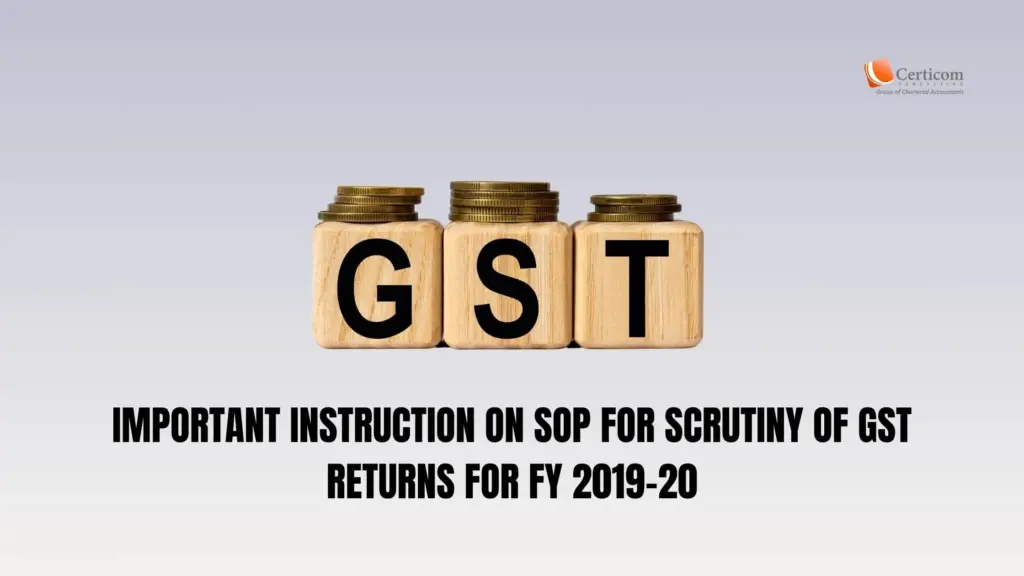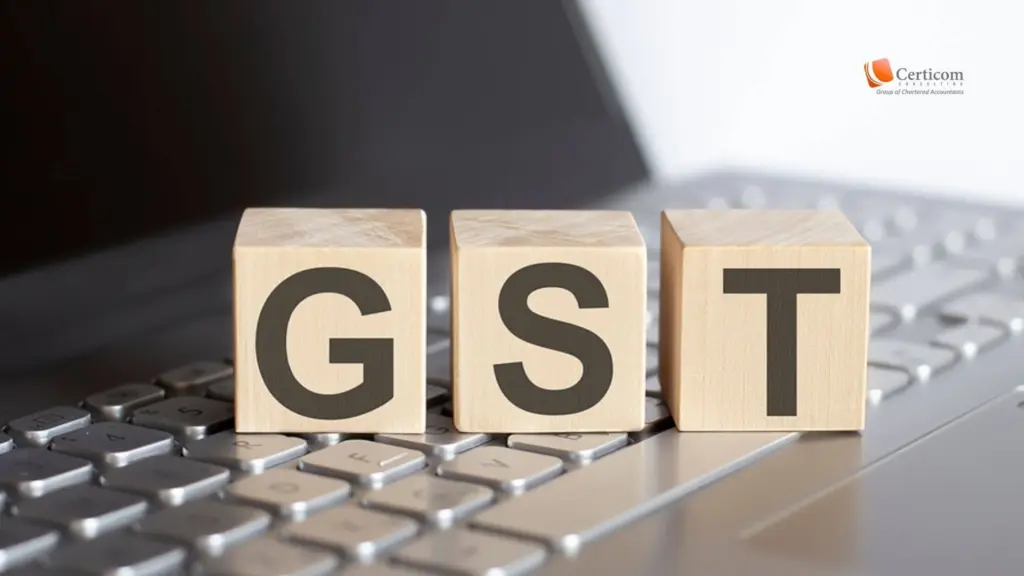Important Instruction on SOP for Scrutiny of GST Returns for FY 2019-20

The Goods and Services Tax (GST) Department has introduced Instruction No. 02/2023-GST, presenting an updated Standard Operating Procedure (SOP) for the scrutiny of GST returns. This revised SOP aims to enhance self-compliance and streamline the process, incorporating advanced features to facilitate efficient tax administration. In this article, we will outline the key elements of the instruction and discuss its implications for taxpayers.
1. New Online Workflow for Scrutiny of Returns
DG Systems has developed an advanced online workflow integrated into the ACES-GST application. This workflow enables the scrutiny of returns from the fiscal year 2019-20 onwards. Taxpayers can conveniently access the scrutiny dashboard to determine if their GST Identification Numbers (GSTINs) have been selected for scrutiny.

2. Communication of Discrepancies and Further Actions
The updated functionality empowers proper officers to promptly communicate identified discrepancies in returns to registered persons. They can initiate an effective information exchange, receive replies, and take appropriate actions in accordance with Section 73 or 74 of the CGST Act, 2017.
3. Selection of Returns for Scrutiny
The Directorate General of Anti-Profiteering (DGARM) will select returns for scrutiny based on specific risk parameters. The scrutiny dashboard of the respective proper officers will display the GSTINs chosen for scrutiny.
4. Finalization of Scrutiny Schedule
Proper officers will finalize a comprehensive scrutiny schedule, outlining the month-wise scrutiny plan for the selected GSTINs. Priority may be given to riskier GSTINs based on their potential revenue implications.
5. Verification of Returns and Related Particulars
Proper officers will diligently verify the accuracy of returns and related particulars provided by registered persons. Information from various reliable sources, including DGARM, ADVAIT, GSTN, and the E-Way Bill Portal, will be utilized to ensure thoroughness and precision.
6. Issuance of Notices and Explanation Requests
Through the scrutiny functionality integrated into the ACES-GST application, proper officers will issue notices in FORM GST ASMT-10, apprising registered persons of identified discrepancies and seeking necessary explanations.
7. Response and Resolution
Registered persons have the option to accept the discrepancies and pay the dues or provide detailed explanations using FORM GST ASMT-11. The reply submitted will be accessible to the proper officer through the scrutiny dashboard.
8. Conclusion of Proceedings
If the explanation provided by the registered person is deemed satisfactory, the proceedings will be concluded with an order issued in FORM GST ASMT-12. However, in cases where a satisfactory explanation is not provided, further action under section 73 or 74 of the CGST Act may be initiated.
9. Audit or Investigation Cases
Audit or investigation cases will require approval from the jurisdictional Principal Commissioner/Commissioner. Such cases will be referred to the Audit Commissionerate or the anti-evasion wing, as applicable.

10. Time-Bound Scrutiny
To ensure efficiency, the scrutiny of returns will be conducted within specified timelines. Timelines have been established for various stages, including the issuance of notices, submission of replies, and determination of tax and other dues.
11. Reporting and Monitoring Mechanisms
Effective reporting and monitoring mechanisms have been implemented, with Management Information System (MIS) reports readily available on the scrutiny dashboard. Monthly Scrutiny Progress Reports for FY 2019-20 onwards need not be sent to DGGST, except for previous financial years.
12. Leveraging Technology for Efficient Tax Administration
This updated online scrutiny functionality aims to foster self-compliance and streamline the process by minimizing unnecessary interactions. By leveraging technology and employing risk-based tools, the GST Department aims to ensure efficient tax administration.
Read More: RED FLAGS TO AVOID WHILE FILING TAX RETURN (FY 2022-23)
13. Exemptions for Previous Financial Years
It is important to note that the procedure outlined in Instruction No. 02/2022 will continue to be followed for the scrutiny of returns pertaining to the financial years 2017-18 and 2018-19.
Related Post
Form 16: Key to Accurate ITR Filing
Cost Inflation Index for FY 2025-26: Impact on LTCG Tax
Book A One To One Consultation Now For FREE
How can we help? *




